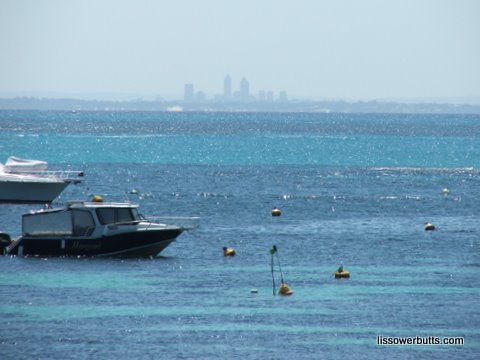OK so this is part 2 of my free on-page SEO tutorial last time we talking about what is a keyword – today I’m going to tell you what to do with that keyword – now you’ve found it. So let’s say -your site is about – oh I dunno – websites for small business maybe?
Ideally – if I wanted a site completely focussed on websites for small business I would do the following:
- I would try to get the exact domain name match e.g. websitesforsmallbusiness.com (or net or org) – there is definitely a bias from Google in favour of exact match domains (this does not extend to .info, .ws. .biz .co or any other extension). In this case those domains are unavailable and I wanted to focus the site on a particular country, so I went with the .co.nz extension.
- I would include the keywords I was targetting in the blog’s title – sometimes you can’t get, didn’t get, didn’t think before you established a website – so end up with a stupid domain name e.g. lissowerbutts.com – but you can still target a totally different keyword by using the title tag. Ideally though I’d have had an exact match domain name.
- Then I’d add the keyword again into my tagline.
- I’d head over to the permalink settings and change them from the default for WordPress – which is the ugly ?p21 format and make them %postname% so that now I would have “pretty” urls like http://websitesforsmallbusiness.co.nz/website-package which include the page’s and post’s titles.
- If I wasn’t using a theme such as Catalyst which includes SEO options I would install a FREE plugin such as all-in-one-SEO or Platinum SEO. I would tell the SEO options it to NOT noindex categories and tags and other pages.
- Using those SEO options I’d add the main keyword into the title and meta-description of my homepage, and it and related keywords in the overall meta tags of the blog. This counts for very little – Yahoo may still use meta tags, Google probably doesn’t. Google may or may not use your meta description in your site’s search engine’s listing.

- Now having done all that – I would add some posts and pages – which – obviously – would talk sometimes about websites for business in NZ or websites for small business or even cheap websites for NZ business – all obviously closely related.
- If I was feeling really ethusisastic I would add some optimized images. Now Google is pretty stupid – its only a computer and tell that the bunch of pixels at the top of the post are about the consequences of earning a passive income online. So I told it! (Yeah I know its a stretch but I don’t have an image of banknotes lying on the beach!). BTW traffic you get from Google’s image search are notorious for only staying long enough to steal your images, they are useless as readers or revenue sources! To optimize an image do the following:
- change the name of the image – before you upload it – include your keyword in the new image’s title – mine is now called https://lissowerbutts.com/wp-content/uploads/2010/07/Perth-From-Rottnest-passive-income-reward1.jpg
- then when you import the image – make sure the title, the alt-title, the description and the caption all to include the keyword of interest.

Targeting More Than One Keyword on a Website
All of the above was an example of a small and focussed website. Not all websites are like that – this one sure isn’t it – it ranks quite well for its main keywords passive income online and related terms. But I also rank for terms utterly unrelated to those. How does this happen – well I do two things – I add relevant content. For example I rank quite well for the term postrunner and postrunner review – that’s entirely deliberate. This is what I did – I wrote a post: Postrunner Tutorial – used the keywords and related terms in the title, at the start of the post and at the end. I didn’t try for any particular number of times – I didn’t unecessarily captialise, bold or italicize the term – though it was natural to use it in sub-headings that happen to be bolded…
Then I wrote another post – also about Postrunner – I linked the two together – simply to tell my readers that there was a previous post that they should maybe read first – and to tell the search engines the same thing. I used the same category and similar tags for the two posts. Google now knows that I have quite a lot of i.e. more than one page, about this particular topic – that gives my pages a boost up the rankings,and hopefully a double listing (if I use exactly the same anchor text linking from each post to the other).
Ultimately you can get one website ranking for a bunch of unrelated keywords – and even it you started totally wrong – you can change everything up but adding titles and revising posts and get the same effect in the end. The key though is to get the site ranking for one keyword first – once you have the first ranking it will be quicker and easier to get subsequent rankings.
So over a couple of thousand words that’s pretty much a free on-page SEO guide. Its really not that hard – and almost all of your effort should actually be directed at getting backlinks for your site !

19 replies on “Free On-Page SEO Tutorial – Using Your Keywords In Your Site”
Nice write up Lis, I especially like the bit about targeting plenty of keywords. A lot of people are still using the mini site formula and just going after one or two when they can be building something much bigger, better and more stable long term.
And the time spent can lead to greater rewards too. With more of an authority site you can even write a post to give out some backlinks that actually mean something too 😉
Both work for me Dave – all supersites would be nice – but I prefer to spread my risks if you know what I mean!
Very nice and straightforward tutorial. Good tip about the title tag. Most of my sites were made before I knew much about SEO and they do not match their keywords.
hi Angie – you were hiding in Askimet – hence the delay in approving – you might want to ask for reinclusion with them. You can go back in and change the title tags- just make sure you use a redirect plugin to prevent broken links
I’m definitely a fan of diversifying. One thing I really like about the more niche oriented sites is I tend to get really interested in something, then I start to lose interest and move on just as the page hits the top of Google. The larger sites just scream security, especially when they really start gaining authority. Enjoyed the quick two post lesson, it’ll be a good reference for beginners.
LOL Shane – I’m the same – as soon as the site makes me money I get bored with it – while I suspect the real success stories get very interested in it! It was the same as when I had a career – as soon as I had experience in something and was good at it – I wanted to move on and do something different!
Nice post Lis. 🙂
Laid out nice and simple, anyone can understand it… all they gotta do is… follow it. 😉
Shh Rob that’s the real secret – good thing no one gets that bit eh!
😆
Hi Lissie,
Good timing on this for me … ebay just decided to start paying me again for clicks (had one site with phpbay still installed. Checked my account for the 1st time in a couple of months, and noticed I was getting paid. I have a couple of exact match domains that do very well with ebay (but not so much with adsense) … so I’m “back in business” so to speak. Will be using your SEO series to give my sites a “checkup” as I work to build the traffic up again.
Thanks for doing what you do.
Todd
LOL – I doubt that I can teach you anything Todd -but thanks for the nice thought!
Hi Lis,
Nice to see you back in action.
>> hopefully a double listing (if I use exactly the same anchor text linking from each post to the other).
Regarding the double listings – from experience with long-tail keywords, anchor text linking from each post to the other may not be necessary. OTOH, since I’m not exactly ranking for high-traffic keywords, I can’t say if it makes a difference here.
>> Its really not that hard – and almost all of your effort should actually be directed at getting backlinks for your site!
I can’t disagree, but I noticed that my sites which have more content (more words and more articles) seem to get more traffic with fewer backlinks. This could be because larger sites have more long tails, but I sometimes wonder if Google gives a bonus for size (or maybe even a penalty for lack of content?)
Who said that size doesn’t matter :O
I can’t really say that the “basic SEO rules” work accross the board – for some keywords you can easily rank with a minisite and for some you just need more content. Evaluate the sites that are on the front page and make your assumptions…
Size doesn’t matter much – backlinks are way, way more important – far more important than on-page SEO. You might as well do the on-page SEO cause its so easy and it helps – but the real action is off-site so to speak.
That’s true Calvin – you will get the double listing anyways for very uncompetitive terms because there is nothing else for G to list.
Re the backlinks/authority thing – I don’t think its about the size of the site per se. This site – for example – isn’t big 174 pages indexed in G at the moment – but it has heaps of authority – because it has some v. good backlinks – ie backlinks from authorities in my niche. So yes I need fewer backlinks to rank compared to a less authoriative site (oh and this has nothing to do with PR BTW). So no I am not convinced that large sites are a requirement – but they may be a means to the same end LOL
Just read through your seo tutorials – nicely done. I find it amazing how many tutorials regarding keyword research and basic on-page seo, and yet many still don;t get it. I think, for the most part, the tutorials are either too vague or too long, boring and detailed for the novice. Yours, on the other hand, are right on the money.
Thanks Kathleen – frankly most of the tuts I’ve seen are way too theoretical – and most of the detail doesn’t matter – which the geeks fail to appreciate
This has really been helpful for me. I am a TKA member, but still having this broken down in concise manner, is just what I needed. Thanks.
[…] you need to get some basic On-Page SEO right […]